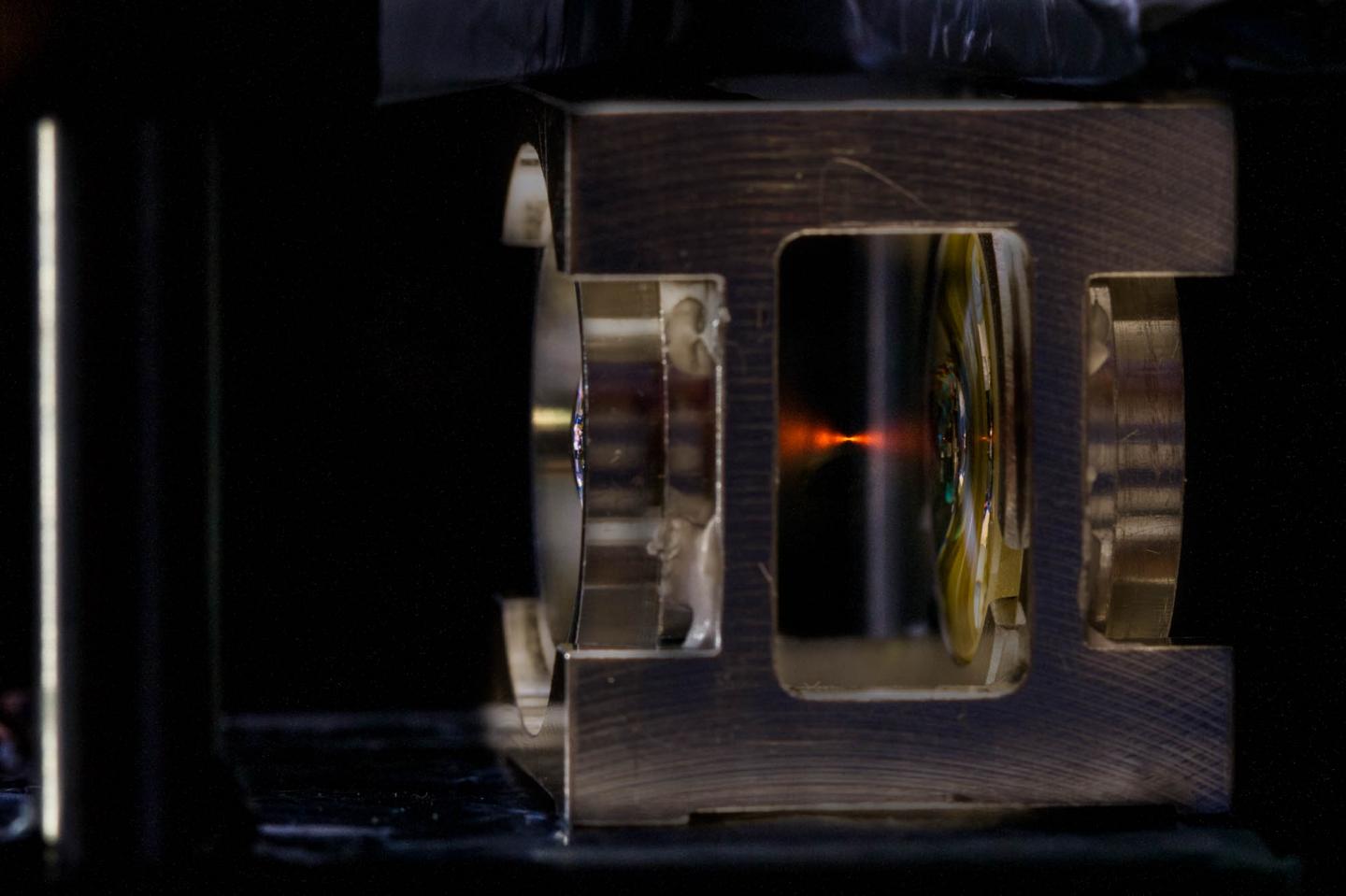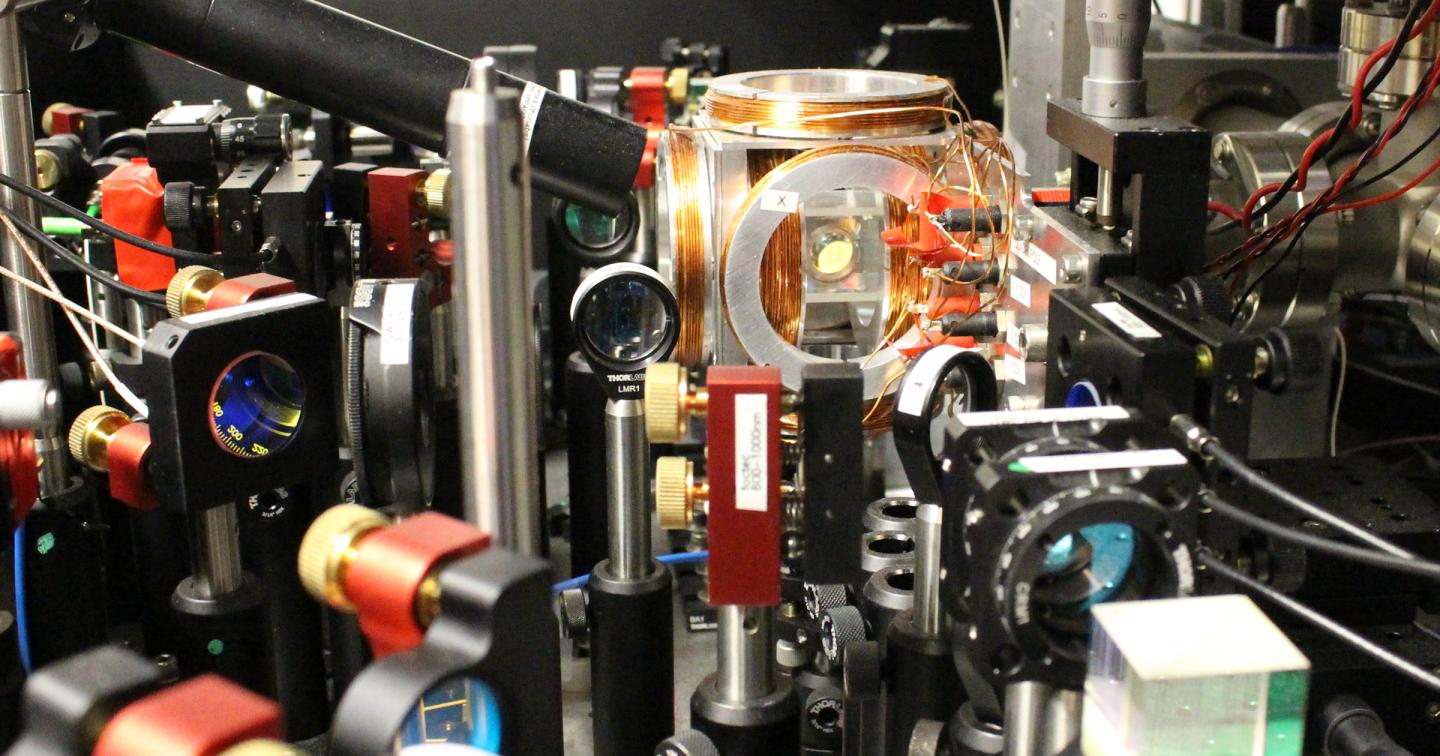31-Oct-2017
It's not easy to bounce a single particle of light off a single atom that is less than a billionth of a metre wide. However, researchers at the Centre for Quantum Technologies at the National University of Singapore have shown they can double the odds of success, an innovation that might be useful in quantum computing and metrology. The findings were published 31 October in Nature Communications.
In their experiment, researchers Chin Yue Sum, Matthias Steiner and Christian Kurtsiefer fired a red laser at a carefully-trapped Rubidium atom. They compared how much of the light gets scattered away when the light comes from just one direction, versus when it comes from two.
"If an atom sends out a photon, the photon can go any direction. Our idea is that to get stronger interactions between single photons and single atoms, we want to reverse whatever the atom does. So here the illumination comes from all directions," explains Steiner.
First, they focused the red laser through a strongly-focusing lens positioned in front of the atom. The atom was manoeuvred to lie at the lens's focal point. In this configuration, roughly 1 in 5 of the laser photons bounced off the atom.
Next, the team split the laser beam, sending half round the front and half round the back of the atom. At the back, the laser again passed through a strongly-focusing lens to reach the atom.
This double-lens configuration is known as 4Pi microscopy. It's a super-resolution imaging technique invented by Nobel laureate Stefan Hell. The name comes from the way angles are described in three dimensions: four π describes a full sphere.
With the light coming at it from both sides, the atom scattered around 2 in every 5 photons - double what was seen with just one lens.

An imaging technique called 4Pi microscopy boosts resolution by sandwiching the sample between two strongly-focusing lenses. Quantum researchers have shown that borrowing this lens trick can boost interactions between photons and a single atom.
Credit:
Ale Cere / Centre for Quantum Technologies, National University of Singapore
The atom not only changed the photons' direction, but also their spacing. In laser light, photons are randomly spaced, with some arriving close together and others separated by big gaps. The team detected that, after passing the atom, the photons were less likely to arrive together. This is evidence of an interaction between the atoms and photons that is 'nonlinear'.
"There's a lot of physics to investigate in nonlinear interactions with photons," says Chin. The effect is crucial for processing information stored in light, for example in optical quantum computing.
###
Reference: Yue-Sum Chin, Matthias Steiner & Christian Kurtsiefer "Nonlinear photon-atom coupling with 4Pi Microscopy" Nature Communications DOI: 10.1038/s41467-017-01495-3 (2017) https://www.nature.com/articles/s41467-017-01495-3
Preprint available at https://arxiv.org/abs/1705.10173
This work was supported by the Ministry of Education in Singapore (AcRF Tier 1) and the National Research Foundation, Prime Minister's office. Matthias Steiner acknowledges support by the Lee Kuan Yew Postdoctoral Fellowship.













